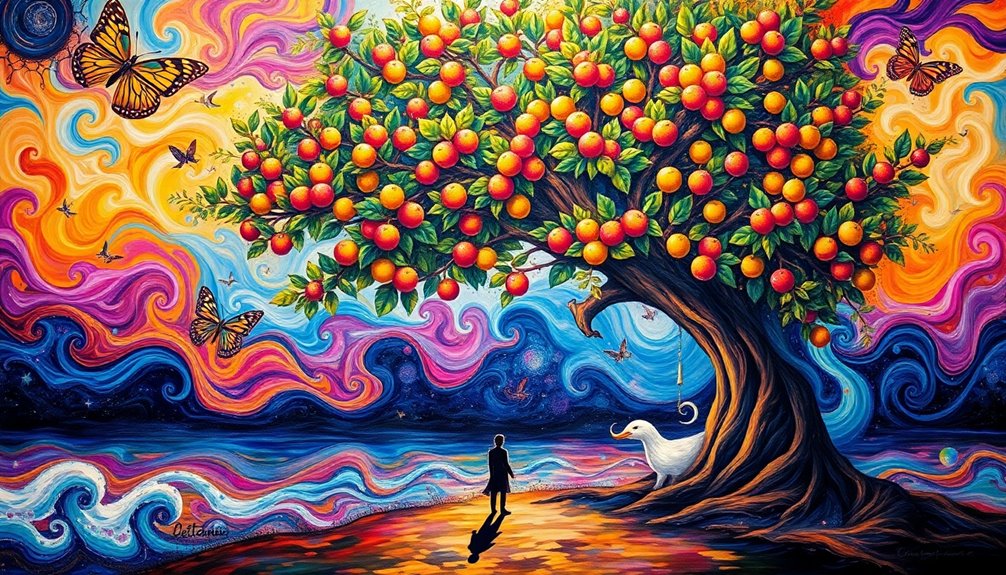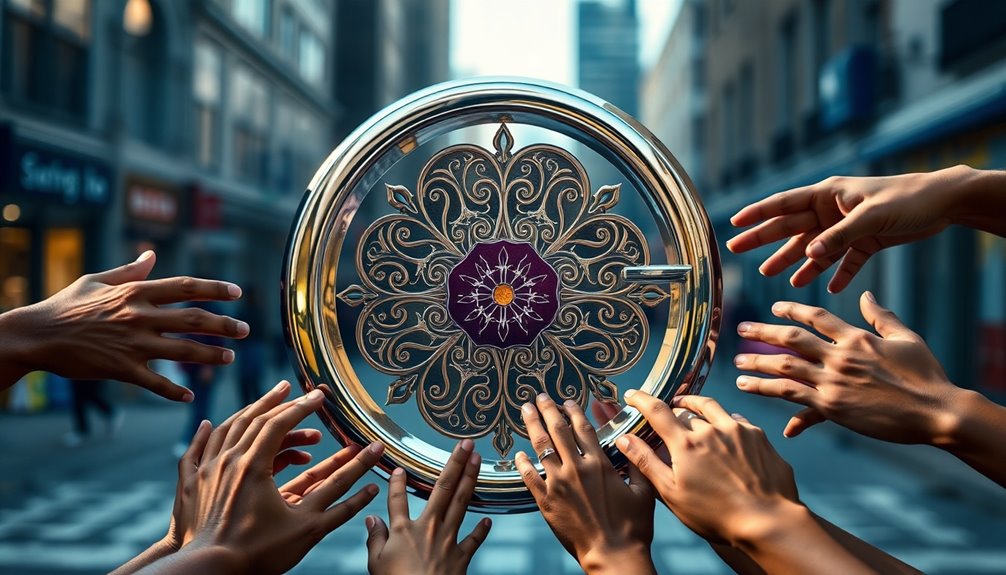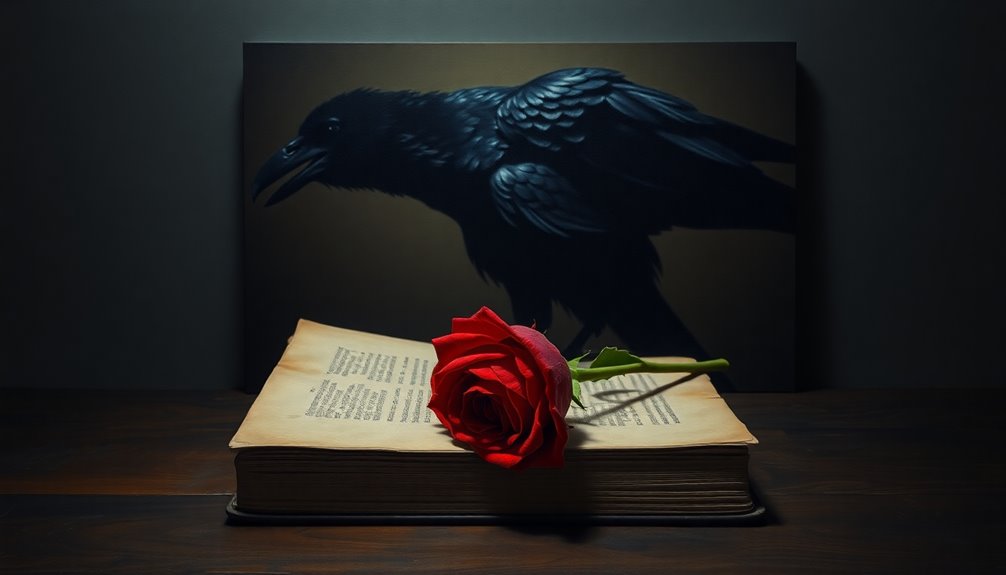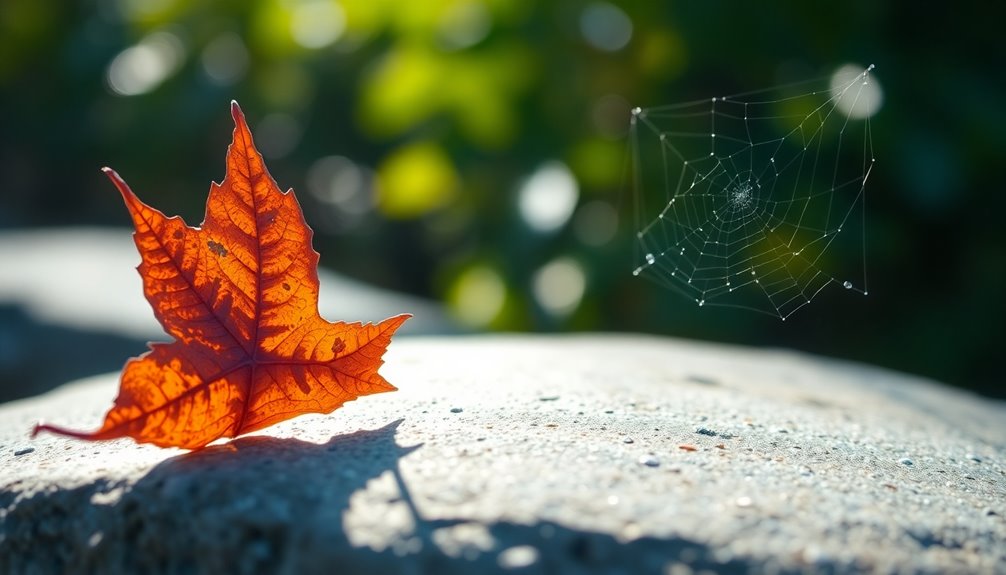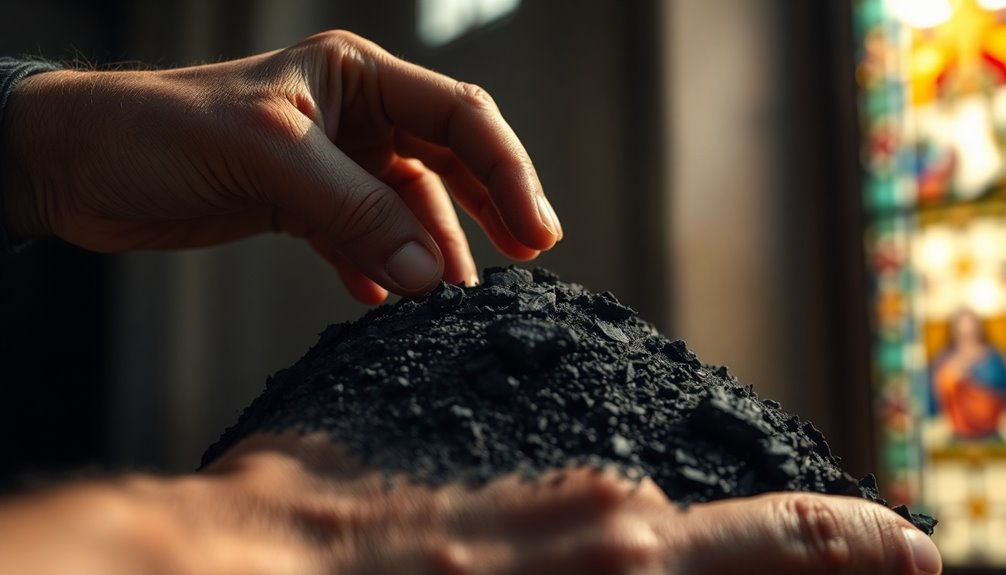A woman's dance is full of meaning and emotions! It often symbolizes grief, strength, and healing through beautiful movements. When she dances, she tells a story, connecting her audience to memories, emotions, and cultural traditions. This dance can also reflect feminine power and vulnerability, showing that strength can come from sharing feelings. It transforms sadness into resilience, offering comfort and hope. Each graceful move can remind us of life's beauty amid challenges. So, when you watch or participate in such a dance, you might discover even deeper meanings waiting to be uncovered!
Key Takeaways
- The woman's dance symbolizes emotional expression, allowing the release of grief and fostering connection among individuals experiencing loss.
- It represents resilience and strength, showcasing how vulnerability can lead to healing and hope in the face of adversity.
- Through its movements, the dance honors cultural memory, preserving stories and traditions while facilitating collective processing of mourning.
- The choreography often reflects the beauty found within trauma, transforming sorrow into a celebration of life and human spirit.
- The dance acts as a powerful homage to lost loved ones, creating a poignant connection between personal and communal grief.
Significance of Dance in Culture
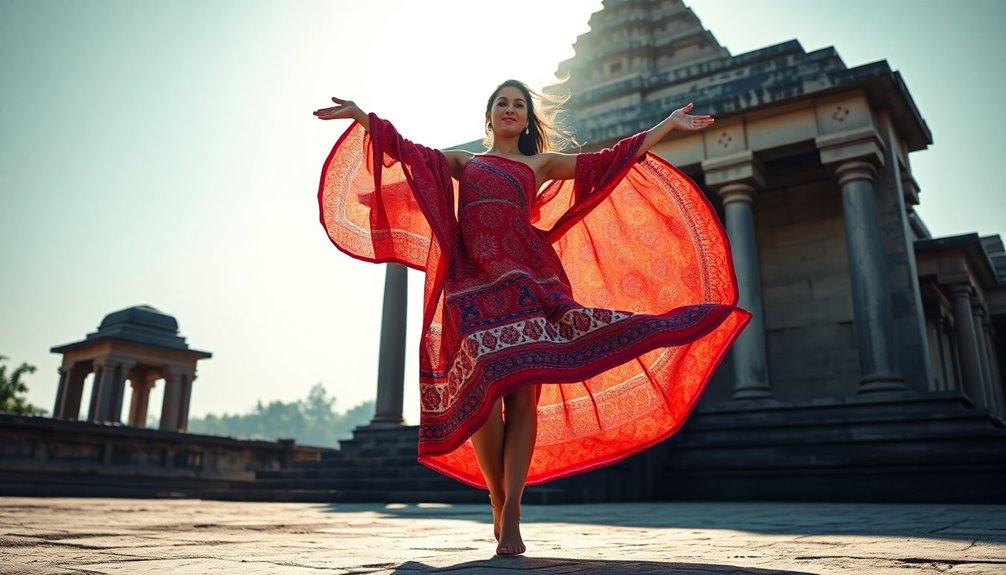
Dance holds immense significance in culture, acting as a vibrant form of expression and communication. Through dance, you can see the heartbeat of a community. In many cultures, dance isn't just for fun; it's woven into rituals and celebrations. It tells stories, honors traditions, and expresses deep feelings.
When people experience grief and mourning, dance offers a way to show their sorrow. It allows communities to come together, sharing their emotions and memories of lost loved ones. This powerful expression helps everyone feel connected, creating a sense of belonging.
Every movement in dance can hold special symbolism. For example, certain dances may represent important historical events or spiritual beliefs. As you watch, you can feel the weight of these meanings.
Moreover, dance can be a way to cope during tough times. Even in conflict, people find ways to use dance to connect with their emotions and maintain their identity. It's a reminder that, despite challenges, the spirit of a community can shine through.
Emotional Expressions Through Movement
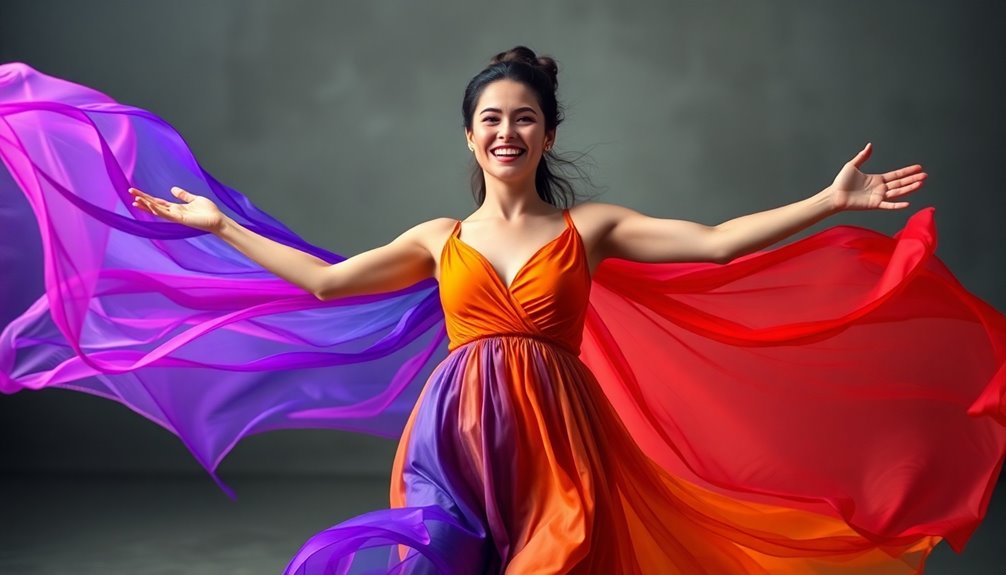
When you watch the woman's dance, you can really feel the deep sadness of grief expressed through each movement. The dancers honor their lost loved ones, creating a beautiful ritual that helps them remember and heal. Incorporating complementary therapies can further enhance emotional healing during such expressive performances. The use of turmeric's potent relief can also support overall well-being as they navigate their emotions. Additionally, the process of navigating emotional turmoil can be profoundly aided by the healing power of movement in dance. It's amazing how this dance connects hearts and offers comfort, showing us all the power of expressing emotions through movement.
Grief in Dance
Grief often finds its most poignant expression through movement, as seen in the woman's dance that symbolizes mourning for lost loved ones. This dance is a beautiful and graceful ritualistic expression of sorrow, especially amidst the chaos of war. It captures the emotional depth of the characters, reminding you of cherished memories and past experiences.
The dance is graceful and peaceful, creating a moment of solace for everyone watching. It's like a dreamy escape from the harsh realities around you. Dobbins' advice to "dance right" highlights the importance of respectful mourning, encouraging you to acknowledge loss even in difficult times.
Through this dance, unspoken emotions come alive. You can feel the sorrow and hope without needing words, as movement speaks what can often remain hidden. Additionally, the profound impact of this expression resonates with existential themes that invite deeper self-reflection on the nature of loss and memory.
Here are some key points to remember:
- Grief and mourning are expressed through movement.
- The dance symbolizes remembrance.
- It's a ritualistic expression of sorrow.
- The emotional depth is captured beautifully.
- It offers an escape from reality.
In this way, the dance becomes a powerful homage to those we've lost, allowing us to process and honor our feelings.
Ritualistic Mourning Practices
Ritualistic mourning practices often bring people together, allowing them to express their emotions through movement in a way that words can't capture. The woman's dance is a beautiful example of this. It symbolizes a ritualistic expression of grief, showcasing the emotional weight carried by those who've lost loved ones, especially during the chaos of war.
As you watch the graceful and fluid movements, you might feel a sense of peace. This dance stands in stark contrast to the brutality experienced by soldiers, reminding us of the importance of honoring the deceased. It creates a cultural connection, letting everyone share their feelings and process their grief together.
The dancer, with her dreamy look, reflects both personal loss and the collective sorrow of the community. Dobbins' advice to "dance right" emphasizes the need for a respectful acknowledgment of mourning.
These practices serve to validate survivors' emotions, helping them heal.
The Role of Grief in Dance
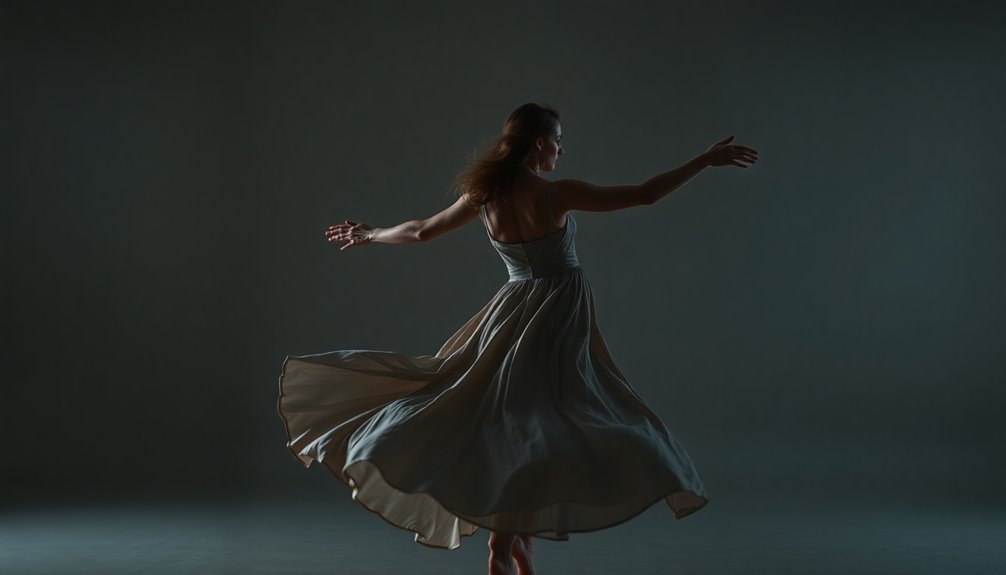
In the heart of the woman's dance lies a poignant expression of grief and loss, reflecting the emotional weight carried by those impacted by war. This dance is a powerful way for individuals to show their mourning for loved ones who are no longer with them. Each movement tells a story, blending remembrance with beauty.
As you watch, you might notice how the dancer embodies respect for those who've passed. It's a reminder of the enduring impact of their absence.
Here are some key points to reflect upon:
- Graceful Movements: The dance captures the essence of sorrow and beauty.
- Cultural Memory: It connects performers to their history and traditions.
- Humanity: The dance highlights the importance of empathy in tough times.
- Finding Solace: Participants often seek comfort and healing through the art of movement.
- Emotional Expression: It gives voice to unspoken feelings amidst chaos.
Through the woman's dance, you see a struggle to maintain humanity, even in the face of conflict. It's a celebration of life, love, and the strength found in shared grief.
Feminine Power and Resilience
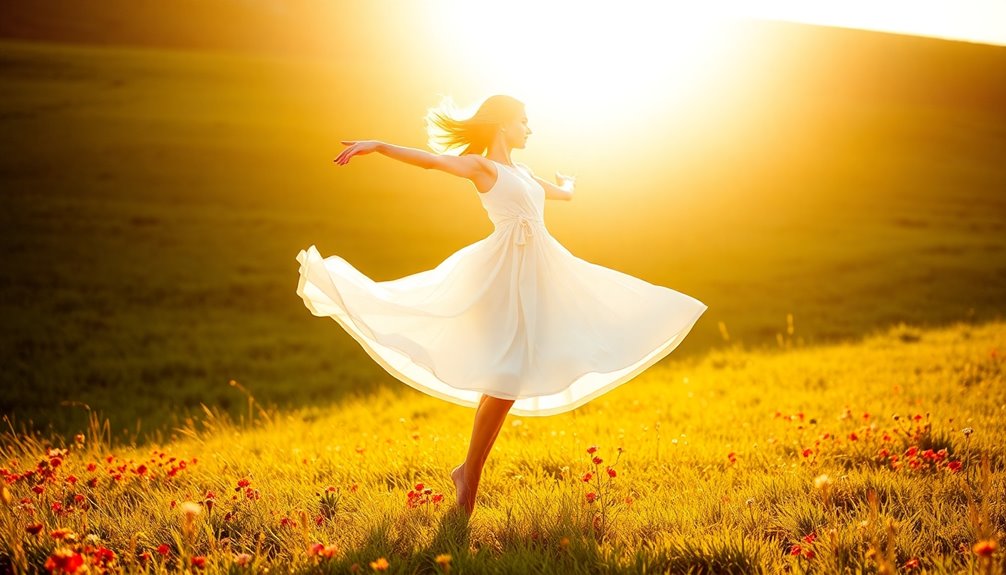
In the woman's dance, you see a beautiful mix of strength and healing.
Each movement tells a story of resilience, showing how vulnerability can be powerful.
As she dances, you can feel the hope and joy that come from embracing her emotions, reminding us all of the strength found in feminine expression.
Dance as Healing Ritual
Every movement in the woman's dance embodies a deep connection to healing, transforming collective grief into a powerful expression of resilience. This beautiful ritual creates a space where mourning can be shared.
As you watch, you'll notice how gracefully the dancers move. Their fluid motions help participants process their emotions together, reminding everyone that they're not alone in their pain. Engaging in self-care practices during such rituals can significantly enhance emotional well-being.
The rhythmic dance also connects to cultural memory, honoring lost loved ones and preserving their stories. Dobbins' call to "dance right" emphasizes the importance of respectful remembrance, showing how feminine power intertwines with acknowledging trauma.
The dance acts as a coping mechanism, allowing characters to navigate their pain and reclaim their identity amid chaos. Studies show that emotional regulation through creative expression can significantly enhance resilience and promote healing in communal settings.
Here are some key points to remember about this healing ritual:
- Dance transforms grief into resilience.
- Movement allows for shared mourning.
- Rhythms connect to cultural memory.
- Respectful remembrance is essential.
- It helps reclaim identity in chaos.
Ultimately, the woman's dance is a vibrant celebration of healing, strength, and community, inviting everyone to join in this beautiful journey of remembrance and resilience.
Symbol of Strength
The woman's dance emerges as a powerful symbol of strength, showcasing feminine resilience that shines through even the darkest times. She moves with grace, turning her body into a canvas of emotions. Each step reflects the beauty of the human spirit, reminding you that even amidst chaos, hope can thrive.
Her dance connects to cultural memory, honoring those lost in conflict. It serves as a coping mechanism, allowing her and the soldiers to express their grief and find solace in movement. As she dances, she transforms mourning into a celebration of life, illustrating how art can heal.
Here's a table that captures the essence of the woman's dance and its symbolism:
| Aspect | Description | Impact |
|---|---|---|
| Strength | Embodies resilience through movement | Inspires courage |
| Cultural Memory | Honors lost loved ones | Creates connection |
| Coping Mechanism | Provides solace during despair | Fosters emotional healing |
The woman's dance is a testament to the enduring power of beauty and the human spirit, reminding us all of the strength we can find in art, even in tough times.
Embracing Vulnerability Through Movement
Embracing vulnerability through movement reveals a powerful aspect of feminine strength that often goes unnoticed. When you watch a woman's dance, you see how embracing vulnerability can turn grief into beautiful expression. This dance isn't just about movement; it's a way to cope with trauma and emotions that might be hard to express.
Here are some exciting reasons why this dance is so meaningful:
- Strength in Vulnerability: It shows that feeling emotions is a sign of power.
- Cultural Memory: The dance honors losses while celebrating resilience.
- Coping Mechanism: Movement helps people connect to their identities and find peace.
- Transformative Power: Dancing allows for the processing of grief and unspoken feelings.
- Emotional Depth: The insistence on respecting the dance highlights the importance of feminine power.
Through the woman's dance, you witness how movement can transform pain into a joyful expression of life. This dance encourages everyone to embrace their feelings and reminds us that resilience shines brightest when we allow ourselves to be vulnerable.
Contrast Between Beauty and Trauma
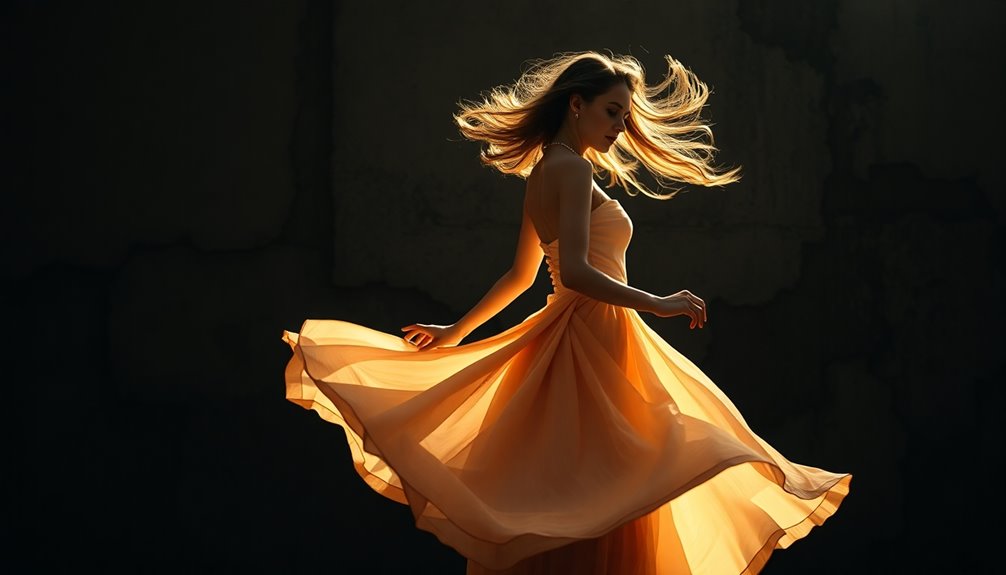
Amidst the chaos of war, the woman's dance unfolds like a delicate flower in a field of rubble, embodying both beauty and trauma. This dance symbolizes the innocence and grace that still exist, even when surrounded by destruction. As she moves, her graceful steps remind us of lost normalcy and the rich cultural memories overshadowed by trauma.
The contrast between the woman's dance and the harsh realities of war highlights life's fragility. Each twirl and leap speaks of hope, even in dire circumstances. It's a moment that brings joy while also reflecting deep mourning for what's been sacrificed.
This dance reveals the emotional scars left by conflict, showing how people struggle to hold onto their humanity amidst brutality. The beauty of her movements acts as a poignant reminder of loss, yet it also offers a fleeting glimpse of hope.
In a world filled with pain, the woman's dance shines like a light, inviting us to remember the beauty that can still be found in life. It teaches us to celebrate the small moments, even when faced with overwhelming challenges.
Coping Mechanisms in Challenging Times
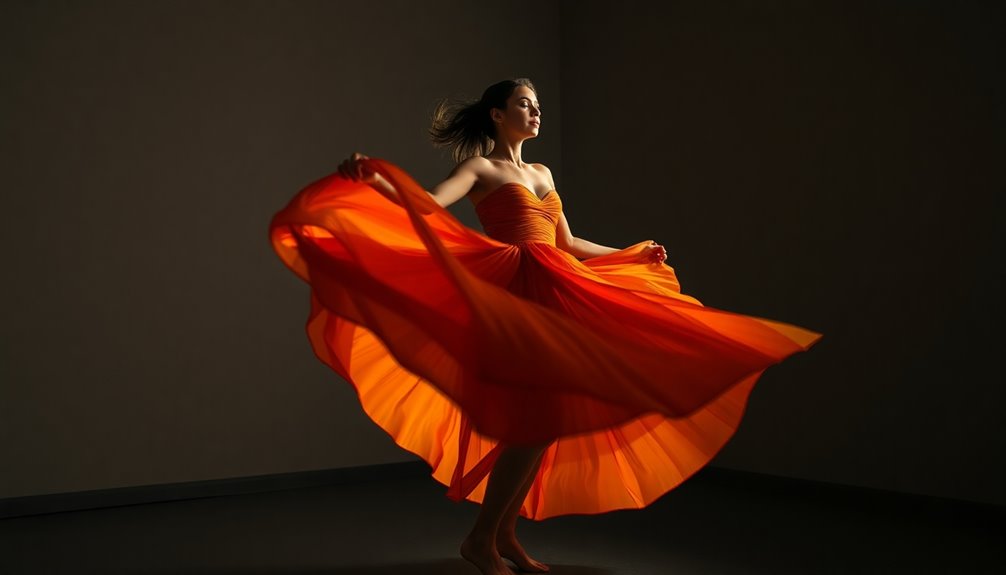
While traversing the chaos of war, coping mechanisms become essential for survival, allowing individuals to process their trauma and reclaim a sense of identity. One powerful way to cope is through the woman's dance. This beautiful dance provides an emotional release, helping people express their grief and connect with their cultural memory. Engaging in such expressive movement can also align with the principles of vibrational energy, enhancing the emotional and mental well-being of the dancers.
It's a chance to remember lost innocence and humanity amid conflict. Dancing isn't just about movement; it's about resilience. Additionally, engaging in activities that foster rebuilding trust can significantly enhance personal connections and emotional stability during challenging times.
Here are some ways the woman's dance serves as a coping mechanism:
- Emotional Release: The dance helps express feelings that words can't capture.
- Connection: It brings people together, fostering empathy among those who share similar experiences.
- Cultural Memory: The dance honors traditions and keeps memories alive despite the chaos.
- Identity: It reinforces personal identity, reminding dancers of who they're beyond their trauma.
- Hope: Through dancing, individuals can reclaim a sense of normalcy, sparking hope for the future.
In these moments, the dance stands in sharp contrast to the brutality of war, showcasing the strength of the human spirit. Additionally, engaging in physical activities like dance can promote mental well-being and help reduce the risk of headaches associated with stress and trauma.
Embrace the power of dance—it can be a light in dark times!
Memory and Storytelling in Dance
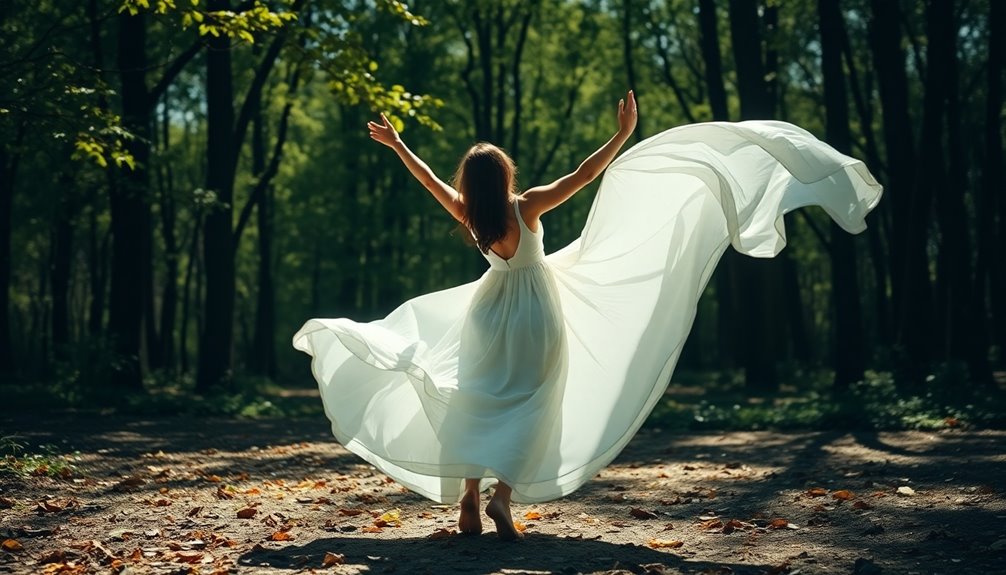
Through the lens of memory and storytelling, the woman's dance becomes a powerful vehicle for expressing collective grief and preserving cultural narratives. This dance symbolizes the deep sorrow and mourning experienced by those left behind, especially in times of war. It serves as a ritualistic expression of loss, offering a moment of beauty amid chaos. You can see how the graceful movements contrast sharply with the harsh reality around them.
Dobbins emphasizes the importance of dancing right, showing how essential it's to honor the deceased. This highlights the emotional connection to cultural memory, reminding everyone of shared experiences of loss. When the characters dance, they cope with their trauma, allowing them to connect with their humanity, even amidst the horrors of war.
The surreal atmosphere, created by the absence of music, makes the moment even more powerful. It reveals the internal struggles of the soldiers as they confront their memories and the impact of their experiences.
Frequently Asked Questions
What Does the Dancing Girl Symbolize?
The dancing girl symbolizes innocence and beauty, bringing light to a dark world.
When you watch her, you see how her graceful movements contrast with the harshness around her. Her dance stirs emotions in soldiers, reminding them of lost joys and loved ones. It's like a moment of joy amidst sadness.
Her half-closed eyes suggest she's escaping reality, showing how deeply the war affects everyone. She represents hope and the power of memory in tough times.
What Is the Character's Purpose in the Narrative?
In the story, the character serves an important purpose by showcasing the emotional impact of war on everyone involved.
You see her dance as a way to express feelings that words can't fully capture.
It's a moment where you can feel the connection between pain and beauty.
This helps you understand that even in difficult times, people find ways to cope, remember, and show their humanity.
It's a powerful reminder of resilience!
What Is the Effect of This Story in Which O'brien Explains the Story Behind Speaking of Courage?
In "Speaking of Courage," O'Brien really connects with your feelings about war and its impact.
He shows how soldiers struggle with their memories and emotions. The story makes you think about loss and the importance of remembering loved ones.
You can feel the weight of grief and the beauty of moments that help heal, even if just for a little while.
It's a powerful reminder of the human experience, filled with hope and sorrow.
Why Was the Girl Dancing in the Chapter Style?
The girl's dance dazzles in a devastated village, capturing the attention of everyone around.
She's dancing to escape the chaos and connect with lost joy. With her dreamy eyes and graceful movements, she creates a moment of magic amid the mayhem of war.
This dance isn't just for show—it's a way to cope, bringing smiles to soldiers' faces and reminding them of the happiness that's still possible, even in tough times.
Conclusion
To sum up, the woman's dance is a beautiful blend of emotion and power. Did you know that studies show dancing can boost your mood by releasing happy chemicals in your brain? That's right! When she dances, she shares stories of grief, resilience, and hope. Each movement tells a tale, connecting us to the past while celebrating strength. So, next time you see a dance, remember the deep meanings behind those joyful steps!






